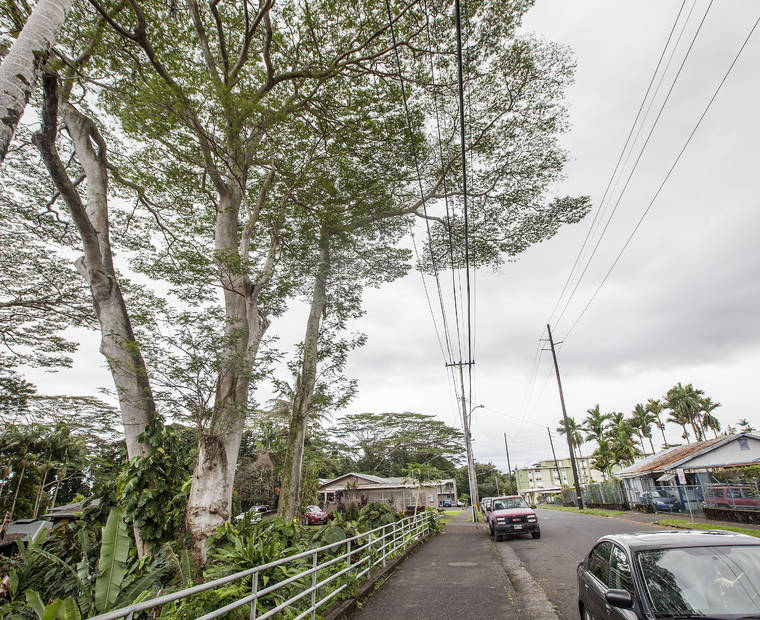Another weapon in the fight against albizias
A bill that allows landowners to remove albizia trees from adjacent properties has become law and will take effect in July.
Senate Bill 464 became law without the signature of Gov. David Ige on April 22 and allows homeowners to take action to remove potentially dangerous albizia trees on adjacent properties.
ADVERTISING
“The value of this bill is that any albizia will become a threat eventually,” said Springer Kaye, manager of the Big Island Invasive Species Committee.
Albizia trees, an invasive species prone to shedding heavy limbs, caused substantial damage to homes and infrastructure following Tropical Storm Iselle in 2014.
Kaye pointed out that the bill has its limits. For example, the bill only applies to albizias on private and vacant land. Landowners will be required to determine whether the neighboring land is truly vacant — and not, for example, resting pasture land — before proceeding to remove albizias.
Because many vacant landowners do not live on the island, contacting them in order to address albizias on their property can be challenging. The new law allows those concerned about the potentially dangerous trees to bypass a lengthy process of attempting to communicate with the landowners before getting the county involved directly.
When the bill takes effect July 1, landowners who want to remove neighboring albizias that overhang their own properties will be able to do so through a simple process outlined in the bill.
First, the landowner must consult a “tree risk assessment qualification certified arborist,” at cost to the landowner, to confirm the tree in question is potentially dangerous and can be safely removed. While this was an addition not found in the bill’s original draft, Kaye said arborists likely would have to be involved in the tree removal anyway, as fully grown albizias are not something that can be removed without specialist experience.
Then, the landowner must make two or more reasonable attempts to contact the neighboring property owner within 30 days, and give written notice to the neighboring owner.
After carrying out those steps and receiving no response from the owner, the concerned landowner will be authorized to enter the neighboring property and treat the tree with herbicides, again at cost to the landowner.
The landowner also will be able to cite the new law as a defense, should their actions be misconstrued as trespassing.
“The idea is that this is a last-ditch solution to get rid of these trees after everything else fails,” Kaye said.
Email Michael Brestovansky at mbrestovansky@hawaiitribune-herald.com.


